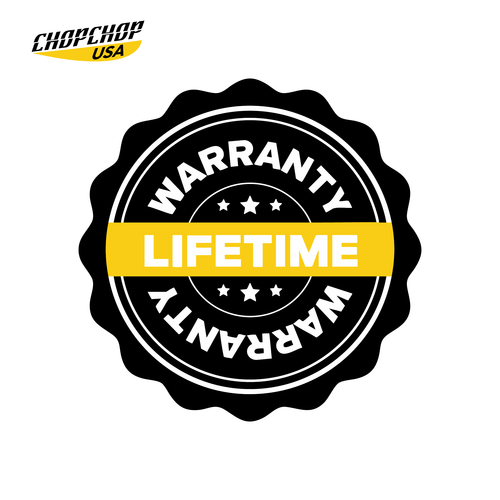Cast Iron vs Stainless Steel Cookware: Which One Is Better? It depends on how and what you love to cook. cast iron vs stainless steel cookware each brings unique advantages to the kitchen. Cast iron cookware is known for its unmatched heat retention, natural non-stick seasoning, and rustic charm, while stainless steel cookware delivers professional-grade precision, easy maintenance, and modern versatility.
In this guide, ChopChop USA will explore the key differences, pros, and cons to help you choose the best cast iron vs stainless steel cookware for your kitchen.
What Is Cast Iron Cookware?

Cast iron cookware is made by pouring molten iron into molds, resulting in thick, heavy pans that retain heat exceptionally well. It’s prized for its ability to reach and hold high temperatures, perfect for searing, baking, and slow cooking.
When properly seasoned, cast iron develops a natural non-stick surface free from harmful chemicals like PFAS or PFOA. Its durability, even heating, and timeless appeal make it a favorite for generations — a strong contender in the cast iron vs stainless steel cookware debate.
What Is Stainless Steel Cookware?

Is Stainless Steel Cookware Safe? Stainless steel cookware is made from a corrosion-resistant alloy of iron, chromium, and nickel, commonly in 18/10 or 304-grade steel. It’s valued for its strength, sleek appearance, and resistance to rust or staining.
Unlike cast iron, stainless steel doesn’t require seasoning and offers precise temperature control. It’s ideal for browning, sautéing, and creating rich pan sauces — making it a top choice for modern kitchens and an essential player in the cast iron vs stainless steel cookware comparison.
Key Differences Between Cast Iron and Stainless Steel Cookware

When comparing cast iron vs stainless steel cookware, each material shines in different cooking situations. Here’s a breakdown of their most important distinctions:
Weight and Handling
Cast iron cookware is significantly heavier, which helps it retain heat but can make it harder to maneuver, especially for large skillets. Stainless steel cookware is lighter, easier to lift, and ideal for everyday use — especially for fast-paced cooking.
See more: How Much Does a Frying Pan Weigh?
Heat Retention and Conductivity
In the cast iron vs stainless steel cookware debate, cast iron wins in heat retention, maintaining steady temperatures even after ingredients are added. However, stainless steel — especially those with an aluminum or copper core — heats up faster and distributes heat more evenly.
Cooking Style
Cast iron vs stainless steel cookware offers versatility for all types of meals. Cast iron excels at high-heat searing, deep frying, and baking. Stainless steel is better for delicate cooking like sautéing vegetables or making pan sauces where control is key.
See more: How to Cook With Stainless Steel Pans: Tips, Tricks & Common Mistakes
Non-Stick Properties
Seasoned cast iron becomes naturally non-stick over time. Stainless steel requires oil or preheating to prevent sticking but produces better browning and fond for sauces. Both have distinct learning curves for mastering cast iron vs stainless steel cooking techniques.
See more: Do You Need to Season Stainless Steel Pans?
Maintenance and Cleaning
Cast iron requires special care — hand washing, drying immediately, and oiling to maintain its seasoning. Stainless steel cookware, however, is dishwasher-safe and easy to maintain. If convenience is your priority, stainless steel has the edge in the cast iron vs stainless steel cookware showdown.
See more: How to Clean Stainless Steel Pans So They Last For Years
Durability and Longevity
Both materials can last a lifetime when cared for properly. Cast iron cookware can even be restored after rusting, while stainless steel resists corrosion and doesn’t require reseasoning. For pure longevity, both perform exceptionally well in the cast iron vs stainless steel cookware comparison.
Reactivity and Food Flavor
Cast iron cookware may react with acidic foods like tomatoes or vinegar, affecting flavor and damaging the seasoning. Stainless steel cookware, being non-reactive, handles acidic dishes effortlessly — making it more versatile for varied cuisines.
Aesthetic and Presentation
Cast iron brings a rustic, traditional look to the table, perfect for oven-to-table serving. Stainless steel cookware offers a polished, professional appearance that complements modern kitchens. Both add character to your culinary setup, depending on your style.
Cooking Performance Comparison
In cast iron vs stainless steel cookware, performance depends on your cooking method.
Cast iron cookware shines in high-heat searing, baking, and slow-cooked recipes. Its ability to hold heat creates perfect crusts on meats and golden textures on baked goods.
Stainless steel cookware, by contrast, excels in precision cooking. It heats up quickly, cools down fast, and allows you to control temperatures with ease. Ideal for stir-fries, sauces, and sautéing, it’s the go-to choice for chefs who crave consistency and finesse.
Ultimately, both excel — the best cast iron vs stainless steel cookware depends on your preferred cooking style.
Pros and Cons of Cast Iron Cookware

Before investing in cast iron, it’s essential to know its strengths and weaknesses. Here’s what makes it shine — and where it may challenge you.
Pros of Cast Iron Cookware:
- Exceptional heat retention
- Naturally non-stick when seasoned
- Durable and long-lasting
- Chemical-free and toxin-free
- Excellent for searing and baking
Cons of Cast Iron Cookware:
- Heavy and harder to maneuver
- Requires regular seasoning
- Can rust if not properly maintained
- Reactive with acidic foods
Pros and Cons of Stainless Steel Cookware

Stainless steel cookware is a kitchen staple for good reason, but it’s not perfect. Let’s look at the key benefits and potential drawbacks when comparing cast iron vs stainless steel cookware.
Pros of Stainless Steel Cookware:
- Even heat distribution and control
- Lightweight and easy to handle
- Non-reactive with acidic foods
- Dishwasher- and oven-safe
- Sleek, modern appearance
Cons of Stainless Steel Cookware:
- Food can stick if not preheated properly
- Requires oil for non-stick performance
- May discolor with high heat
- Generally higher cost for multi-ply designs
Pros and Cons Summary Table
| Feature | Cast Iron Cookware | Stainless Steel Cookware |
|---|---|---|
| Weight | Heavy | Lightweight |
| Heat Retention | Excellent | Moderate |
| Heat Conductivity | Moderate | Excellent |
| Maintenance | Requires seasoning | Easy to clean |
| Reactivity | Reactive with acids | Non-reactive |
| Durability | Lifetime use | Lifetime use |
| Oven Safe | Yes | Yes |
| Non-Toxic | Yes | Yes |
| Ideal Use | Searing, baking, frying | Sautéing, sauces, precision cooking |
Which Cookware Is Better for You?
If you love hearty meals, slow cooking, and classic techniques, cast iron cookware is your best match. For quick, precise cooking and easy cleanup, stainless steel cookware is ideal. Many chefs find a balance by using both — cast iron vs stainless steel cookware side by side — depending on the dish and desired outcome.
Upgrade Your Kitchen With ChopChop USA
At ChopChop USA, craftsmanship and safety go hand in hand. The brand’s cookware collection is designed to deliver premium performance with non-toxic materials, blending traditional craftsmanship with modern innovation.
Cast Iron Skillet

A true kitchen icon, the ChopChop USA Cast Iron Skillet is designed for chefs who appreciate traditional craftsmanship and long-lasting durability. Its naturally seasoned surface improves with every use, creating a smooth, naturally non-stick finish that enhances flavor and cooking efficiency.
Perfect for searing juicy steaks, baking golden cornbread, or slow-cooking rustic dishes, this skillet is heavy-duty, toxin-free, and virtually indestructible. With proper care, it becomes a lifelong cooking companion — one that only gets better over time.
Stainless Steel Frying Pan

The ChopChop USA Stainless Steel Frying Pan offers a sleek, modern design backed by professional-grade performance. Made from premium 18/10 stainless steel, it ensures even heat distribution and superior temperature control.
Ideal for searing meats, sautéing vegetables, and crafting restaurant-quality sauces, this pan transitions effortlessly from stovetop to oven. Its polished finish and ergonomic handle make it as beautiful as it is functional — the perfect choice for home cooks who demand excellence in both form and function. This pan is rated as one of the Best Stainless Steel Skillets 2025.
Hybrid Nonstick Frying Pan

For those seeking versatility, the ChopChop USA Hybrid Nonstick Frying Pan is a game-changer. It combines the strength of stainless steel with the convenience of a PFAS-free non-stick coating, offering the best of both worlds.
The micro-textured surface allows you to achieve a perfect sear while preventing food from sticking — all without harmful chemicals. It’s ideal for frying eggs, crisping vegetables, or cooking delicate fish with ease and confidence. This pan is also rated as one of the best frying pans in 2025.
Each ChopChop USA cookware piece is thoughtfully crafted to enhance your cooking experience — whether you prefer the classic power of cast iron or the refined control of stainless steel.
Conclusion
When comparing cast iron vs stainless steel cookware, there’s no single winner — just the right fit for your style. Cast iron excels in heat retention and traditional cooking, while stainless steel delivers precision, versatility, and effortless maintenance. Choosing ChopChop USA cookware ensures you enjoy both quality and safety in every meal you make.
Frequently Asked Questions
1. Is cast iron cookware better than stainless steel?
Cast iron holds heat longer, while stainless steel offers better control and quicker response times.
2. Is cast iron cookware non-toxic?
Yes, cast iron is completely free of synthetic coatings and chemicals like PFAS or PFOA.
3. Can I use stainless steel cookware in the oven?
Absolutely. Most high-quality stainless steel pans, like ChopChop USA’s, are oven-safe.
4. Which is easier to maintain — cast iron or stainless steel?
Stainless steel requires less maintenance, while cast iron needs regular seasoning to prevent rust.
5. Why choose ChopChop USA cookware?
Because it combines safety, performance, and timeless design — perfect for both traditional and modern cooking styles.




